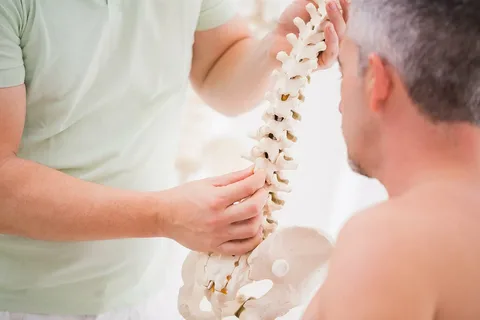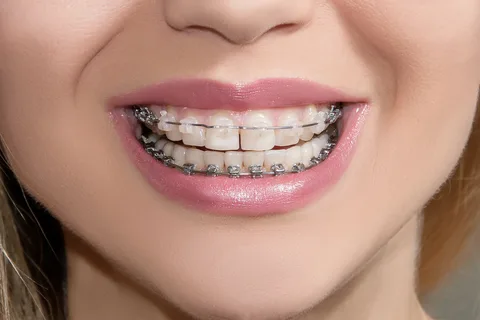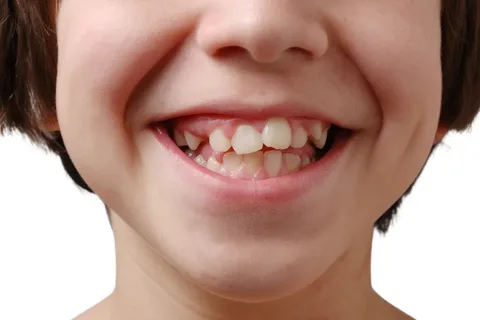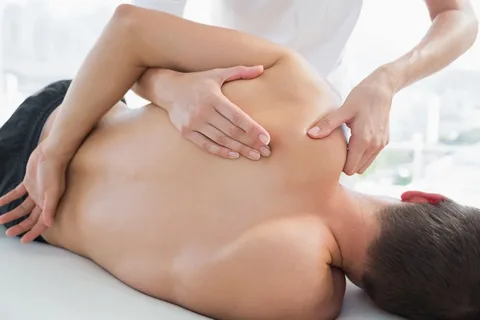The relationship between postural disorders and occlusion conditions
Machine translation
Original article is written in RU language (link to read it) .
Experts have established a direct relationship between the presence of malocclusions and dentoalveolar deformities in children and various pathologies of the musculoskeletal system. There is a high risk of developing poor posture against the background of severe pathology of the dentofacial system. In this regard, treatment of malocclusion pathology in children should be based on an integrated approach, where bite correction occurs along with orthopedic treatment.
About the connection between disorders of the dental system and curvature of posture at the webinar Chewing, posture and dysfunction of the temporomandibular joint .
Malocclusions are accompanied by changes in the bones of the facial skeleton; disturbances in the patient’s posture often occur. The child’s gait changes, and there is a conflict between the structure and movements of the body.
Orthodontic treatment often does not completely solve this problem. Osteopathic doctors, based on many years of observations, have established that in young people the development of scoliosis is the result of occlusion pathology, mainly distal occlusion.

Figure 1. Scoliosis in a child.
Clinical manifestations
The appearance of patients suffering from occlusion anomalies has a number of characteristics that determine their similarity. The similarity of external features is explained by common morphological and functional disorders in the dental system. Among them:
breathing disorder,
chewing and swallowing disorders,
difficulty speaking,
change in facial configuration,
morphological deviations, poor posture without the ability to self-regulate.
Predisposing factors
incorrect posture at the table,
supporting the head with the palms,
supporting the head with the elbow and the hand placed under the chin,
worsening bite pathology associated with directed pressure on the jaw.
Normally, the posture of a person standing in profile looks like this: the centers of gravity of the head, shoulder girdle, hips, knees and feet are located on the same vertical axis - a harmonious figure.
With malocclusion pathology, the center of gravity of the head is shifted forward, which is accompanied by poor posture and increasing stress on the neck muscles. The patient, in order to maintain the correct position of the head and horizontal gaze, has to use the neck muscles, which causes an increase in tension in them.

Figure 2. Integrated approach to treatment.
External examination of a patient with occlusion anomalies
Head tilted forward.
The chest recedes, its anteroposterior size is reduced.
The ribs have an incorrect angle.
The shoulder blades protrude to the sides.
The stomach protrudes.
The shins are twisted.
Flat feet are often observed.
The listed deviations in the early stages are often regarded as weak posture. The gradual worsening of symptoms that occurs with age leads to poor posture. Patients have pronounced curvatures of the spine: lordosis, kyphosis, scoliosis.
It is important to remember about the opposite trend: the state of the musculoskeletal system determines posture and affects the development of the musculoskeletal and ligamentous systems. There are postural reflexes that are caused by bad habits that cause the patient’s incorrect posture, which may cause the development of pathology of the dental system.
Such an understanding of the mutual influence of bite pathology and general disorders of the body helps justify the need for complex treatment of patients by a number of specialists, including osteopaths.
The relationship between the state of the musculoskeletal system and the dental system to maintain the correct vertical posture of the patient
As the severity of the pathology of the musculoskeletal system progresses, the number of patients with distal occlusion increases. Assessing the possibility of self-regulation of occlusion pathology against the background of correction of the musculoskeletal system, we found that self-regulation is possible. However, this possibility is determined by the degree of scoliosis and is realized only with minor curvatures of the spine.
The ineffectiveness of orthodontic treatment, unjustified duration, complications and relapses are explained by the impact on the dentofacial apparatus of disorders of other body systems.

Figure 3. Patient's orthodontic treatment.
Bite pathology can be both a cause and a consequence of pathology of the musculoskeletal system.
A connection has been proven between the presence of lordosis of the cervical spine and the pathology of class II occlusion.
Against the background of distal occlusion, hyperlordosis of the cervical spine is often diagnosed. Incorrect work of the neck muscles causes incorrect positioning of the head, this affects the cervical spine, leads to facial asymmetry, and then to malocclusion. Small and medium deformations of the maxillofacial system do not affect posture. A similar relationship has been established between distal occlusion and scoliosis.
Researchers have suggested a connection between poor posture and the development of malocclusion for a very long time. But until recently, this information was scattered. However, this information was enough to establish that class II malocclusion pathology is directly related to the curvature of the spine in the cervical region. Pediatric patients with scoliosis and torticollis are at risk of developing crossbite.
Reliable diagnostic signs:
the craniocervical angle is increased, mainly noticeable in the frontal projection,
the planes of the maxillary and mandibular arches are displaced,
significant prevalence of lateral bite.
Functionally and anatomically, the dental system is closely connected with the spine in the cervical region. Considering the neuromuscular interactions of these anatomical zones, the question arises of cooperation between orthodontists and osteopaths.

Figure 4. Malocclusion in a child.
The need for interdisciplinary collaboration in the treatment of patients diagnosed with torticollis or scoliosis is considered. Treatment of these diseases necessarily requires the participation of osteopaths, so their participation in research is essential. But, despite the results of many years of observations and research, there are still no clearly formulated protocols for cooperation between orthodontists, orthopedists and osteopaths for the complex treatment of patients with malocclusion pathology.
Pathogenesis from dentofacial pathology to spinal deformity
An anomaly of the frenulum of the tongue causes limitation of its mobility and impaired articulation.
Incorrect articulation and abnormal sound pronunciation, infantile swallowing, pathology of the tone of facial and masticatory muscles are the cause of the formation of various pathologies of the maxillofacial system.
Muscular dystonia, poor muscle functioning, is the etiological factor of poor posture, as well as abnormalities of the maxillofacial system.
Bad habits play a significant role in the development of dental disorders.
A shift in the functional balance of the muscles of the maxillofacial region has a direct impact on the morphological disorders of the temporomandibular joint and occlusal relationships in children and adults.
Mouth breathing disrupts the muscular balance of the dental system, causing pathology of the bones of the facial skeleton, tone and development of the cervical muscles.
Due to the redistribution of the load, curvature of the spine develops in the cervical region; it is most pronounced at the level of the III-IV vertebrae.
There is an abnormal location of the hyoid bone, the head relative to the spinal column, and in some cases there is a pathological shape of the chest.
The positive impact of an integrated approach
It has been proven that osteopathic manipulations accelerate the patient’s adaptation to any orthodontic appliances, help significantly reduce the treatment period, and serve as a prevention of relapses and many complications that often occur after orthodontic treatment.

Figure 5. Treatment by an osteopath.
Orthodontists who have realized the deep connection between malocclusion and musculoskeletal deformities understand the need for close collaboration with specialists in other fields, especially osteopaths.
Doctors who have undergone appropriate training and mastered the skills of osteopathy are aware of the importance of orthodontics, which is a means necessary for correcting the pathology of teeth and jaws. They understand the pattern: the earlier treatment is started, the easier it is to eliminate body dysfunctions and speed up the recovery process.
Integration of osteopathy with dentistry in general and orthodontics in particular is the direction in which it is necessary to move in order to achieve joint results.
Learn more about the relationship between occlusion and posture in the webinar Correlation between occlusion and posture. Differential diagnosis with other pathologies .
